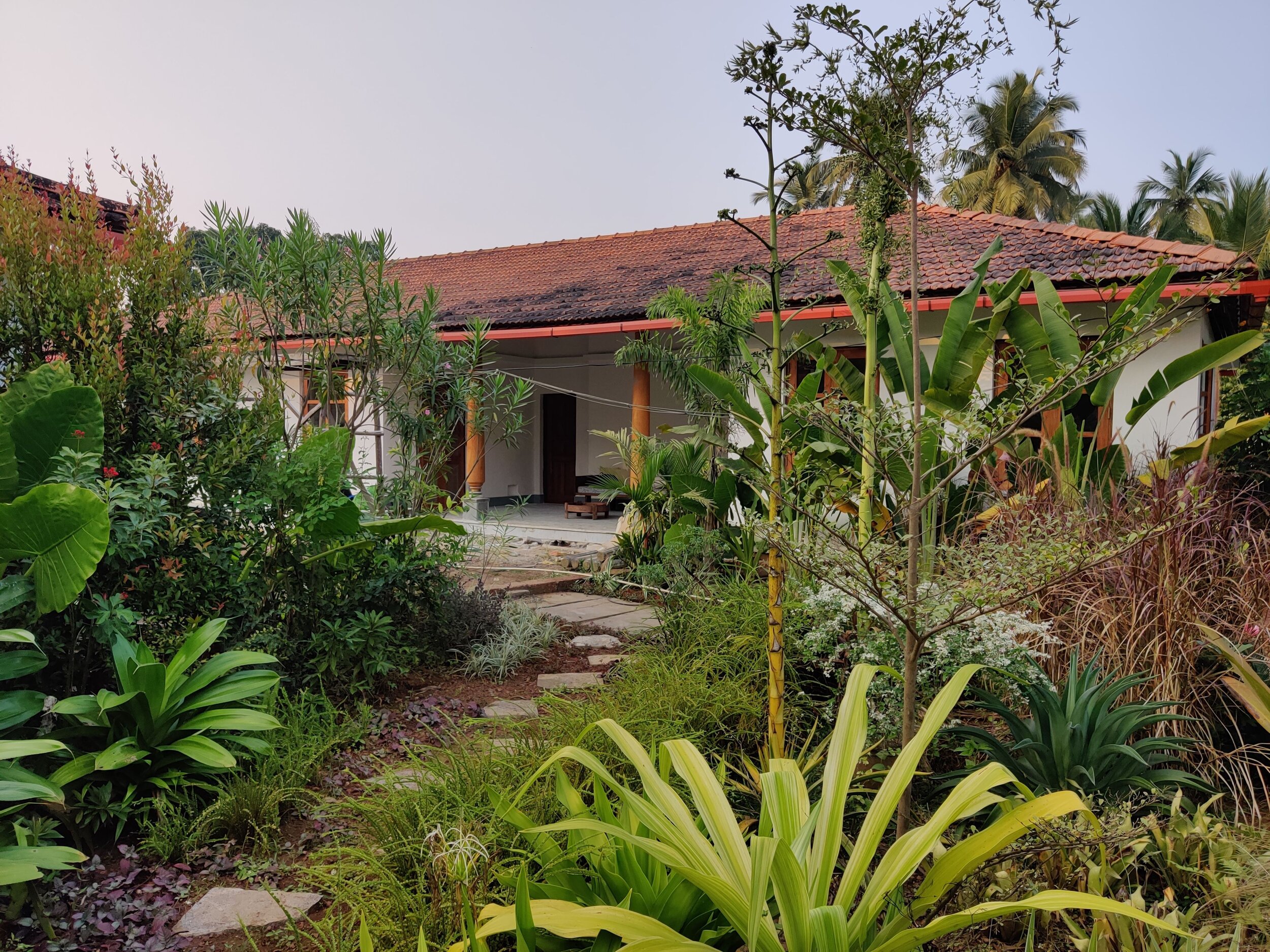I recently conducted an IG Live on taking A Site Positive Approach. As a follow up to that, I conducted another video session to get into details and answer pertinent questions about Rainwater Harvesting. I discuss the elements that make up a RWH system, compare the differences between rural and urban water management systems, and introduce some of the various options available for harvesting water. I also speak about the Goan monsoon patterns and the site specific methods that are useful in tropical areas. As an example, I explain the simple but effective well system created at Navovado, our completed vacation house in Goa. I also explore natural water systems such as ponds and bioswales which we have physically implemented at our project The House with Three Pavilions in Goa.
A Blog
with a curation of our design ideas and inspiration for houses in Goa, contemporary art and architecture.
Archive
- A Grounded Palette 12
- Architecture 86
- Art 22
- Bangalore 1
- Conservation 6
- Design 39
- Designing a House in Goa 16
- Ecological Design 20
- Environment 38
- Geoffrey Bawa/Bijoy Jain 6
- Goa Ecology 7
- House for Sale in Goa 20
- Interiors 17
- Landscape 3
- Landscape Design 9
- Life 23
- Lifestyle 10
- Living in Goa 34
- Mentoring 4
- Moving to Goa 24
- Navovado Project Update 4
- Nivim Project Update 33
- Press 11
- Resort-style Lifestyle 14
- Sustainable Architecture 20
- Sustainable Design 18
- Toybox 1
- Wellness 5
- reed bed 1
What is a green building?
A green building is one where you’re trying to reduce the impact of the construction on the environment. It is about making the right choices at every stage and looking at every possible way, to optimise resources during and post construction and to minimise or offset one’s footprint right from the design stage to the occupancy stage. Right from positioning the building on the site, being mindful of the solar and wind orientation, looking at the existing resources on site to incorporate them into the building, preserving the underground water table - the environment is part of the design criteria from the very first step of the design process.
Here are some tips for an architect to design a green building
The building should be designed for its local climate and weather
The design should be site specific
The natural features on the site must be preserved whether it is the trees, the underground water table, the contours and terrain, etc
Plan openings for maximised daylight and cross ventilation
Reduce the urban heat island effect
For landscaping, use lesser amounts of non permeable surfaces like concrete and more permeable surfaces like grass that allow water to percolate and recharge the underground water table
Reduce concrete exposure because concrete tends to absorb a lot of heat
Enhance thermal comfort by thinking about all parts of the envelope - the walls, the windows, the shading devices, the roof, etc - to reduce energy expenditure
Conserve water and collect or harvest rainwater
Use aerators for taps and dual flushes for WC
Use solar water heaters
Use solar panels if the site allows for it
Compost using house and site waste and feed it back to the garden
Reduce, Reuse, Recycle
Every little detail helps.
Links to our previous Blog Posts on Green Building:
This past month, amidst anxieties surrounding a sudden drastic change in our realities, I hosted an Instagram live session, especially for architecture students and professionals. We have been receiving a larger than normal volume of job applications and we see this as a sign that the younger architecture community is anxious about their future. It is clear that the construction industry is going to slow down and the availability of labor and material will be in shorter supply. This will directly impact our architecture community, especially the younger architects who were looking to begin their careers at this time. This was our way to communicate with some answers based on our experience.
We directly addressed some questions that had been sent to us beforehand. Some of the questions addressed by us were:
What advice would you give a recently graduated architect or designer?
What is the relevance of green architecture in India, and what are your thoughts on green architecture in general?
Which software would you recommend architects be familiar with?
Any advice for designers starting out now, in the midst of COVID?
What are somethings you do to keep yourself motivated and productive whilst being in quarantine?
Part 1 of 7:
The session started with a self-introduction, a bit about my educational background and experiences.
Sustainability has always been an intrinsic consideration in my practice, and I decided to discuss this in the following segment.
We dived into discussing the impact of COVID on our world and our industry, considering ways in which we had to adapt moving forward.
This is followed by suggestions based on how I’ve been keeping productive despite having to stay indoors as part of quarantine measures.
This segment highlights job opportunities for students.
I have also compiled a comprehensive list of free and accessible resources for students or professionals who are taking this time to upskill.
We end of this session by considering ways in which our industry as a whole would permanently change as a result of the crisis.
I hope these videos have been useful for you. If you have any lingering questions, do leave them in the comments section.
Below is also a list of free(ish) online resources for architecture students and young professionals that are online and can be used to upskill during this time:
Signing off,
Anjali


















